A Visit to Palomar
- By Maggie Masetti
- August 24, 2011
- 4 Comments
The last time I visited an observatory, it was an ancient Chinese one. This time I visited one a little closer to home.
When I learned that I was going to be in Southern California (visiting my husband who was there for back-to-back science conferences), I knew I had to stop at Palomar Observatory! After all, back in college, I spent a chunk of one semester of Astronomy class in the basement of Davey Lab using a jeweler’s loupe searching for quasars on old POSS (Palomar Observatory Sky Survey) plates. (And that way lies madness.)
It turned out to be well-worth a visit. The main attraction at Palomar is the giant Hale telescope, which lives in the biggest dome there. And it’s truly impressive. The Hale telescope has 5.1 m (200 inch) mirror and is named for George Ellery Hale, the man who was behind the creation of the observatory. In fact, it was the largest telescope in the world for a long time, until Keck I on Mauna Kea was built in the early 90s.
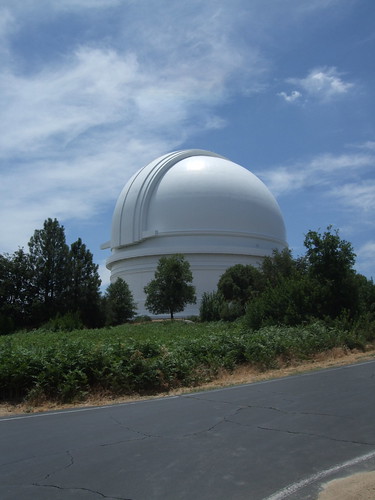
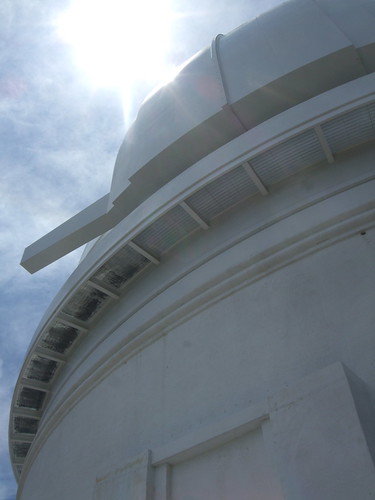

The telescope was very expensive for the time – it was built by Caltech with a 6 million dollar grant from the Rockefeller Roundation. The glass mirror blank was made out of Pyrex by none other than Corning Glass Works in New York State.
The mirror actually reminds me of the James Webb Space Telescope’s mirror, because the back of Webb’s (beryllium) mirrors are machined out to reduce their weight, while keeping them stable. Though the Hale’s mirror is glass, it was actually cast in mold that had 36 raised mold blocks, which created a honeycomb pattern on the back of it. This cut down the amount of Pyrex used in the mirror by half, so that it would cool faster and allow for mounting points for even weight distribution. The mirror was transported from NY to CA, upright with bulletproof glass over it, because they were afraid people might take potshots at it!
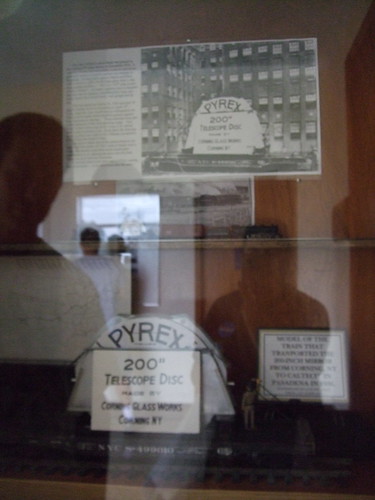
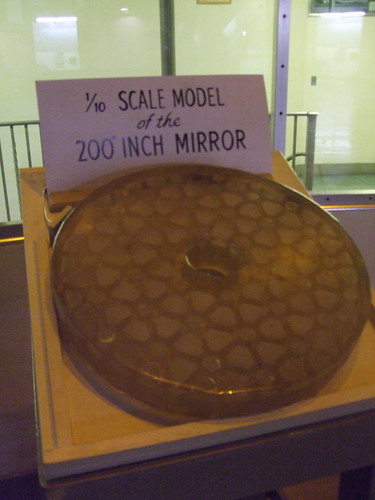
The above is a scale model. How big is the real mirror? Well, there’s a giant stone blank right outside the observatory that is exactly the same size and sat in the mounting until the actual mirror was done!

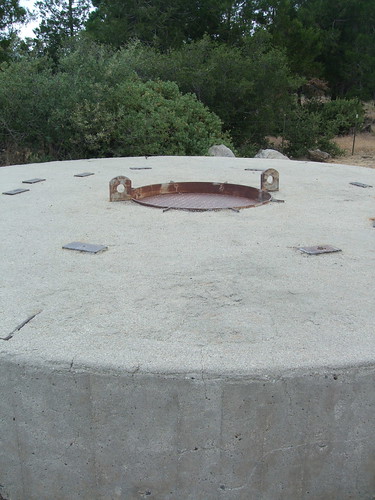
Our tour started in the basement where we could see the foundation of the dome and of the telescope itself:

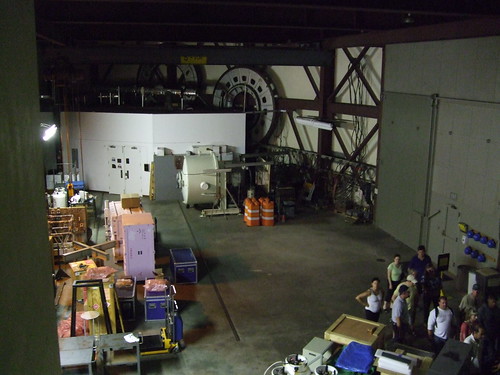
Next we went into the dome to see the telescope, which was so big, you couldn’t get it all into one picture. Here’s where an observer can sit, which is just beneath the mirror:
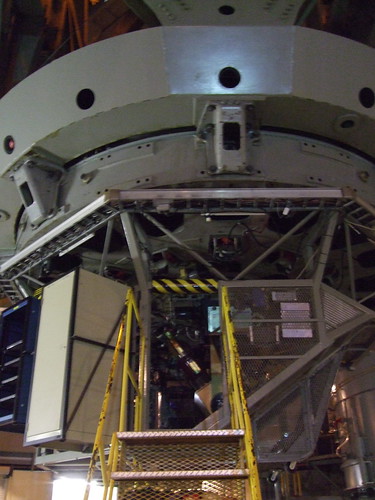
The mirror is just above that cage, held in that round metal structure. It has a cover on it to protect it.


The Hale is a Cassegrain, which is a type of reflector. Light comes in from the sky, hits the primary mirror, bounces up to the secondary mirror and then back towards the primary, focused through that hole you see in the center of the mirror. Behind that is where instruments, or an eyepiece or CCD would go. (If you want to learn more about how reflecting telescopes work, you can try my little Flash game, “Scope It Out.”) Here’s the rest of the telescope, which is aimed at the ceiling so that gravity’s pull on the mirror will be as even as possible.


The mirror is actually removed every few years and re-coated with aluminum. It takes so little, about a single plumbing washer’s worth of metal. That’s not so different from Webb either – the gold coating on its mirrors is about equal to the gold in a wedding ring!
The re-coating of the Hale’s mirror is done in this contraption:
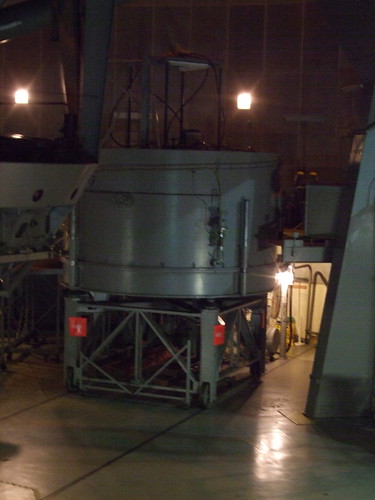
The tour next took us out on the Hale’s dome, where we had a view of some of Palomar’s other obseratories
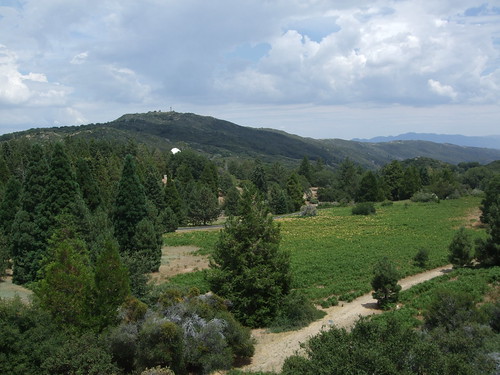

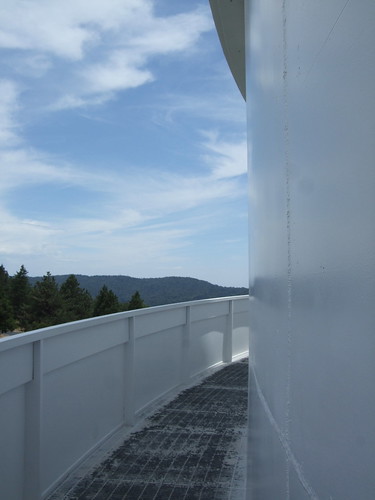
We got another view back inside:
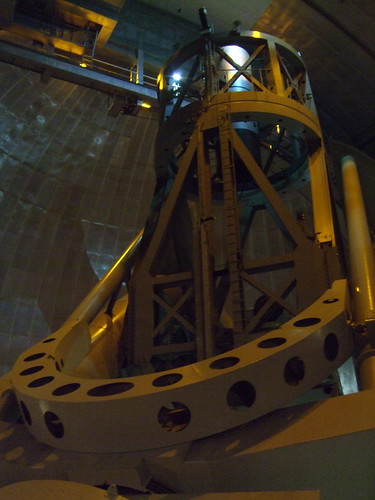
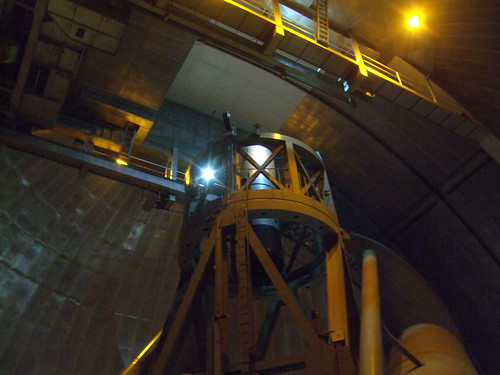
We didn’t get to see the dome rotate, but here are the wheels in turns on:
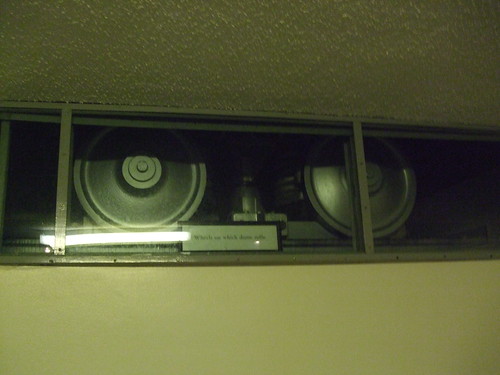
Here’s a view of the door in the dome from the outside:
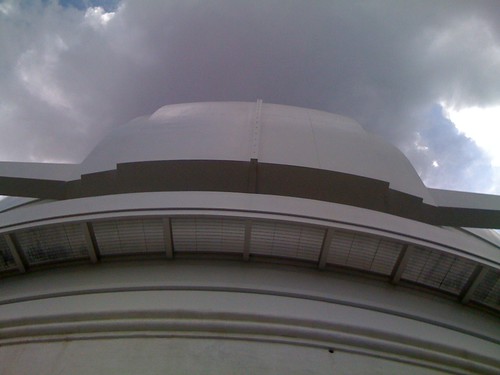
I had a lot of fun on the tour and it was really cool seeing such a famous and historical observatory, which is still used today. If you’re ever the San Diego area, I definitely suggest a visit. You can find info about tours on their website.



Thanks for the photos and the tour, Maggie. I don’t expect to ever get to Palomar, so this is much appreciated.
So glad you enjoyed it! Thanks for the comment, Sid!
Thanks for this virtual tour at Palomar.
I hope to visite this observatory soon.
I’ve always had a personal affinity for Griffith Observatory. You can see that famous Hollywood sign, the tour guides are enthusiastic and put on a good show, and you can look through the telescope at night! There’s something so 90s about sitting in your room as a kid and looking out the window with a big, expensive telescope.